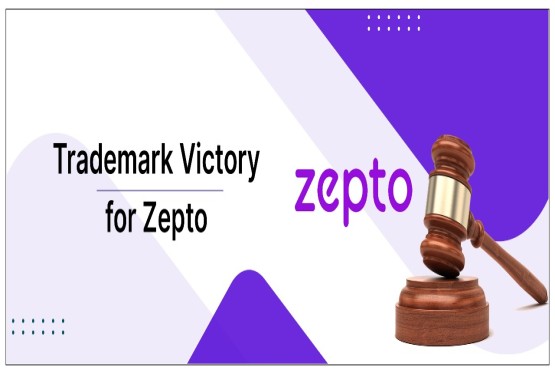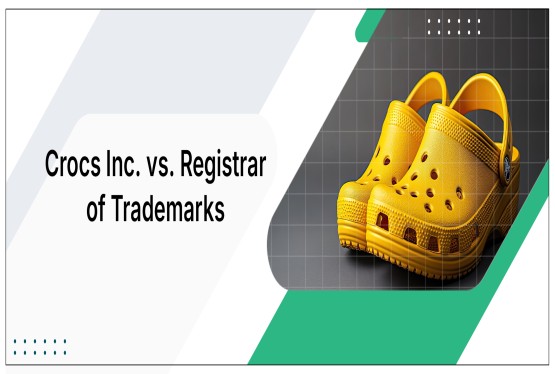In today's market-driven economy, a trademark is what makes a brand stand out. Whether it's a unique name, a catchy logo, or an innovative design, trademarks serve as powerful tools for brand recognition and brand trademark protection. When registering a trademark, it is important to pay attention to all the details. One of the important steps in this process is undergoing a thorough trademark search. This process not only helps in determining the availability and distinctiveness of a proposed mark but also plays a significant role in avoiding potential legal conflicts and registration rejections. In this article, we will explore why a trademark search is critical, outline the methods to perform an effective search and provide insights into analyzing the search results.
Importance of a Trademark Search
A trademark search is necessary to ensure a smooth prosecution and registration procedure for a trademark. It helps identify potential legal conflicts early, allowing businesses to make informed decisions about their proposed mark before investing significant time and resources in the registration process. Suppose a trademark search reveals existing marks that are identical or like the proposed trademark. In that case, it can prevent potential rejections during the trademark examination process and legal complications down the line. This precautionary step is particularly crucial in light of Section 11(1) of the Trademarks Act 1999, which lays down that a trademark shall not be registered if it bears identity or similarity with earlier trademarks, especially when covering similar goods or services.
Businesses can determine if their proposed trademark infringes on existing marks or creates market confusion by performing a thorough trademark search. This precautionary step allows them to either modify their trademark to avoid conflicts or choose an entirely different mark, thus significantly improving their chances of successful registration and avoiding potential legal disputes in the future. While some may consider the search to be an additional expense, the cost of doing a thorough trademark search is sometimes significantly less than the possible legal expenses and damages associated with trademark infringement.
Steps to Conduct a Trademark Search in India
-
Identify your Trademark: Before beginning your trademark search, it is essential to precisely identify all aspects of the mark you propose to register. This preliminary step forms the foundation of an effective search strategy and helps ensure comprehensive results. This includes: -
-
The exact word or phrase
-
Any logos or designs
-
The specific goods or services associated with the mark
-
The class(es) under which you plan to register your mark
The Indian trademark system, like many others globally, uses the Nice Classification, which categorizes goods and services into 45 distinct classes. Carefully consider which class or classes are most relevant to your business activities. You can create a detailed profile of your proposed trademark by precisely identifying these elements – the verbal and visual components of your mark, the associated goods or services, and relevant trademark classes.
- Public Search: The Indian Trademark Registry maintains an online database called “Public Search of Trademarks.” Visit the official website of the Controller General of Patents, Designs & Trademarks. Go to the “Public Search'' section under “Trademarks.” It has three main search modes:
-
Word Mark Search: This allows you to search for trademarks based on specific characters, either as a prefix or suffix. Use this to find exact or partial matches to your proposed mark.
-
Phonetic Search: This mode helps identify trademarks that sound like your proposed mark. The system accumulates all earlier trademarks with phonetic similarity to the applied trademark. When using this feature, try entering different phonetic variants of your mark to ensure extensive results.
-
Device Mark Search: For trademarks with figurative elements, this mode uses the International Classification of the Figurative Elements of Marks, commonly known as the Vienna Codification. If your mark includes a logo or design, familiarize yourself with the relevant Vienna codes to conduct an effective search.
To optimize the efficacy of your search, consider phonetic similarities that might not be immediately apparent, visual similarities in logos or designs using the Vienna Codification system, and conceptual similarities that could lead to consumer confusion. Additionally, do not overlook common misspellings or variations of your proposed mark, as these could also pose potential conflicts. By utilizing all available search modes and considering these various aspects of similarity, you can conduct an extensive trademark search that significantly reduces the risk of overlooking relevant existing marks.
- Internet Search: Apart from conducting a trademark search in the online database of the Indian Trademark Registry, conduct a broad internet/web search, including social media platforms, e-commerce platforms, and domain name registrations, to identify any unofficial or colloquial use of similar marks. Further, if you plan to expand internationally, consider searching international trademark databases like WIPO's Global Brand Database.
Analyzing TM Search Results
After conducting a comprehensive trademark search, it is advisable to thoroughly analyze the results to determine the registrability of your proposed mark and assess potential risks. This is where a professional trademark search opinion becomes invaluable. An expert analysis provides in-depth insights into legal nuances, quantifies conflict risks, and offers strategic recommendations based on current trademark laws and recent court decisions.
If the results reveal potential conflicts with existing trademarks, it is prudent to consider modifying your proposed mark or even abandoning it altogether before proceeding with registration. This approach can help you avoid legal complications and wasted resources. On the other hand, if your search indicates that your proposed trademark is unique and does not infringe on any existing rights, you can move forward with the trademark registration process.
While carrying out an initial search yourself is beneficial, a professional trademark search opinion offers a level of expertise that can save significant time, money, and legal complications in the long run, making it an essential investment in your trademark strategy.
Conclusion
One of the most important steps in the trademark registration procedure in India is performing a comprehensive trademark search. It helps you assess the distinctiveness and availability of your proposed mark, minimizing the risk of rejection and potential legal conflicts. While the process can be time-consuming, the benefits far outweigh the effort invested.
While it is possible to conduct an initial search independently, the complexity of trademark law and the critical methods involved in interpreting search results make professional assistance important and invaluable. At Compliance Calendar LLP, our approach is to help startups in protecting their brand name/logo/design and help in the trademark registration process end-to-end. For any query, you may contact us at 9988424211 or email us at info@ccoffice.in. Let Compliance Calendar be your trusted partner in trademark registration and protection
FAQs
- What is a trademark search?
A trademark search is the process of reviewing existing registered and pending trademarks to ensure that your proposed mark does not clash with those that are currently in use or registered.
- What are trademark classes?
In India, trademarks are registered under 45 different classes, depending on the type of goods or services for which you are seeking trademark protection. There are 45 classes in total, out of which 1-34 are for goods, and 35-45 are for services.
- Why are trademark classes important?
Trademark classes help organize and smooth the registration process. They also determine the scope of protection for your trademark. Registering in the correct class or classes ensures your mark is protected for the specific goods or services you offer.
- What if my goods/services seem to fit into multiple classes?
You may need to register for multiple classes. It is advisable to be inclusive than to miss a relevant class. You can seek advice from a trademark attorney or agent to help you determine the appropriate class for your brand name registration.
- Can I conduct a trademark search on my own, or do I require a professional?
You can conduct a basic search on your own, but for a more thorough search and expert analysis it is advisable to consult a trademark professional.
- What tools can I use to conduct a trademark search for my mark?
The Indian Trademark Registry maintains an online database called “Public Search of Trademarks.” You can visit the official website of the Controller General of Patents, Designs & Trademarks. Go to the “Public Search” section under “Trademarks” for a thorough search. Apart from this database, you can make general web searches, including social media platforms, e-commerce platforms, and domain name registrations, to identify any unofficial or colloquial use of similar marks.
- What if my trademark is like an already existing mark?
If your trademark search reveals similarities with an existing mark, proceeding with a similar mark could lead to rejection of your mark during the trademark examination process, and you may face potential trademark infringement issues
- How can I avoid conflicts with existing trademarks?
To avoid conflicts with existing trademarks, ensure to conduct a thorough trademark search, analyze the search results, and modify your mark accordingly. You can seek professional advice. You can connect with us if you are looking to register your trademark.






























_(b)_of_the_Trademark_Act,_1999_(1)_crop10_thumb.jpg)



_crop10_thumb.jpg)




























_crop10_thumb.jpg)
_crop10_thumb.jpg)






_crop10_thumb.jpg)








_crop10_thumb.jpg)



_crop10_thumb.jpg)




























_crop10_thumb.jpg)

















_crop10_thumb.jpg)






_crop10_thumb.jpg)












































































































































_crop10_thumb.jpg)




































_crop10_thumb.jpg)












_crop10_thumb.jpg)































